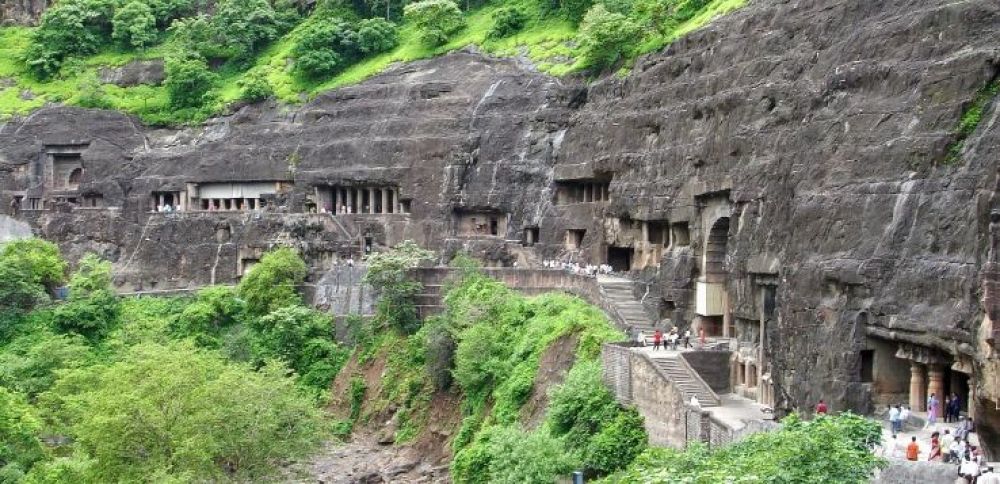

Aurangabad, a city in Maharashtra, India, is a treasure trove of historical attractions, with the Aurangabad Caves standing as a testament to the region's rich cultural heritage. These caves are a group of 12 rock-cut Buddhist shrines located on the outskirts of Aurangabad, dating back to the 6th and 7th centuries CE.
The caves are divided into three separate groups, each featuring intricate carvings, sculptures, and iconography that reflect the evolution of Buddhist art and architecture. The first group is believed to belong to the Hinayana sect of Buddhism while the subsequent groups illustrate the Mahayana sect's influence. The caves serve as a critical link between the older rock-cut architecture found in western India and the later grand rock-cut monasteries that were established further south.
One of the most notable features of the Aurangabad Caves is the sculpture of the 'Bodhisattva Avalokiteshvara' in Cave 7, which is a remarkable piece of Indian classical art. Moreover, these caves house one of the earliest known examples of Indian pictorial art that bears traces of murals in Cave 10. This cave, also known as the 'Tantric Buddhism Cave', showcases an esoteric form of Buddhism that was practiced in this region during that time.
The caves became an attraction for Western scholars and travelers in the 19th century when India was under British rule. Their historical and artistic significance led to greater attention from archaeologists and historians who worked to preserve and document these ancient structures. However, it was only after India’s independence and subsequent development of its road and rail networks that tourism to these caves increased significantly.
In recent years, the Aurangabad Caves have gained increased attention as part of the cultural and historical tourism circuit in Maharashtra, which also includes the renowned Ajanta and Ellora Caves. Sustainable tourism has been the focus, with efforts made to balance visitor needs with the preservation of the cave complex. Modern amenities and better connectivity have made the caves more accessible to tourists. Local guides and audio tour devices provide in-depth knowledge about the caves’ history, art, and architecture. Annual cultural events and festivals are often held in the vicinity, showcasing the region's traditional music, dance, and crafts, contributing to the holistic experience for tourists.
Visitors to the Aurangabad Caves can combine their trip with visits to other attractions in the city such as the Bibi ka Maqbara, the Panchakki, and the city's many gates. The best time to visit is between November and March, when the weather is cool and pleasant for exploration.
Efforts continue by the Archaeological Survey of India and local authorities to preserve the caves, including restricting damage caused by human interaction and the elements. Awareness campaigns and educational programs are conducted to sensitize visitors about the importance of preserving such sites for future generations.
The Aurangabad Caves hold a special place in India's diverse cultural landscape. As witnesses to centuries of history, they continue to fascinate scholars and tourists alike. Whether you're a history buff, an art enthusiast, or simply looking to explore the timeless beauty of India's ancient architectures, the Aurangabad Caves beckon with open arms.